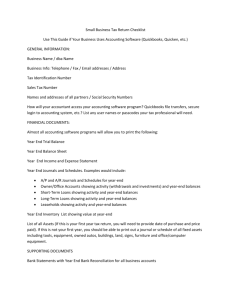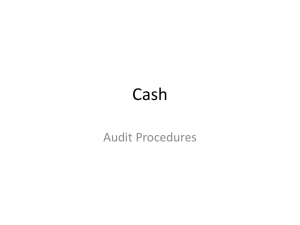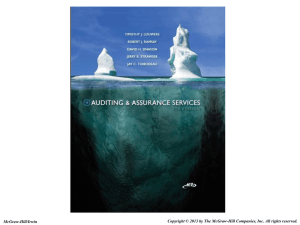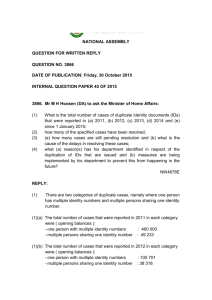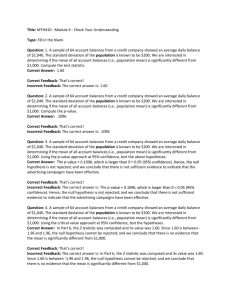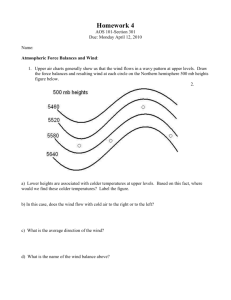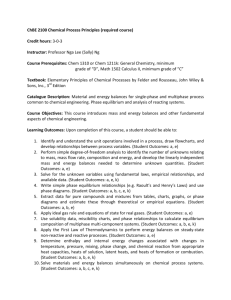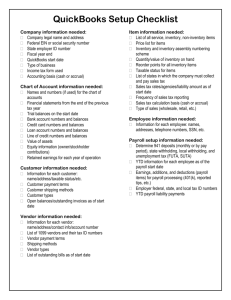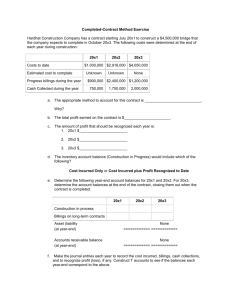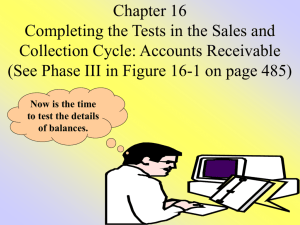Sales and Collection:
advertisement
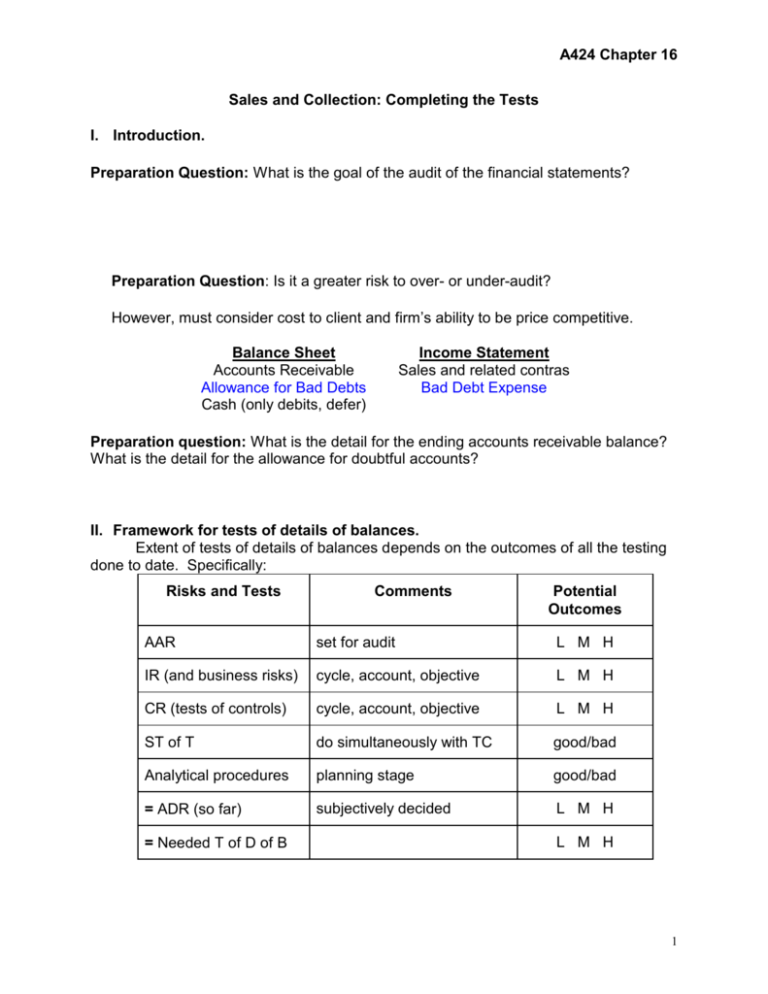
A424 Chapter 16 Sales and Collection: Completing the Tests I. Introduction. Preparation Question: What is the goal of the audit of the financial statements? Preparation Question: Is it a greater risk to over- or under-audit? However, must consider cost to client and firm’s ability to be price competitive. Balance Sheet Accounts Receivable Allowance for Bad Debts Cash (only debits, defer) Income Statement Sales and related contras Bad Debt Expense Preparation question: What is the detail for the ending accounts receivable balance? What is the detail for the allowance for doubtful accounts? II. Framework for tests of details of balances. Extent of tests of details of balances depends on the outcomes of all the testing done to date. Specifically: Risks and Tests Comments Potential Outcomes AAR set for audit L M H IR (and business risks) cycle, account, objective L M H CR (tests of controls) cycle, account, objective L M H ST of T do simultaneously with TC good/bad Analytical procedures planning stage good/bad = ADR (so far) subjectively decided L M H = Needed T of D of B L M H 1 A424 Chapter 16 Preparation question: If an auditor decides that very few tests of details of balances need to be conducted, what are the most likely selected levels of risk and outcomes of all previous testing? (Hint: use potential outcomes on the table on page one to indicate your answer.) III. Tests of Details of Balances – focuses on examining the details of balance sheet accounts (with some attention to related income statement amounts). Typical types of evidence include physical examination, confirmations, documentation, inquiries, and recalculation. Preparation question: Given both the types of evidence appropriate for tests of details of balances and the fact that we are focusing on the sales and collections cycle, what is the most persuasive type of evidence that we will gather? BRAOs Preparation question: When testing the year-end accounts receivable balance, which BRAO should be tested first? BRAOs 1. Existence: Recorded A/R exist. 2. Completeness: Existing A/R are included. 3. Accuracy: A/R are accurate. 4. Classification: A/R are properly classified. 5. Cut-off: Cutoff for A/R is correct. 6. Detail tie-in: A/R in the aged trial balance agree with related master file amounts, and the total is correctly added and agrees with the general ledger. Realizable value: A/R is stated at realizable value. 7. Order Some basic procedures See below 8. Rights & obligation: The client has rights to A/R. See below 9. Presentation & disclosure: A/R presentation and disclosures are proper. See below 2 A424 Chapter 16 C. Confirmations – typically do at year-end, always a sample Preparation question: Why do auditors typically send out confirmation at the end of the year? Preparation question: What BRAO objectives do confirmations satisfy? 1. Required by SAS unless: a. A/R immaterial b. Expect bad response rate c. IR and CR low and other substantive tests available 2. Types – can use in combination a. Positive with balance b. Positive without balance c. Negative, customer asked to reply only if disagree with balance Use negative only if all of the following true: - large number of small balances - IR and CR low - believe confirmations looked at by customer 3. Results – agree or disagree or don’t know (non-reply). For non-replies try sending a second request. Alternative procedures: Look for cash receipts in subsequent time period Examine supporting sales invoice/shipping documents Inquire of personnel Expand cut-off work 4. Other a. Selection of accounts to confirm b. Control of confirmations – list, mail, return D. Cut-off – during the inventory observation at year-end get the last number for the sales invoice and the bill of lading. Be cautious with loaded trucks. 1. Know the criteria – transfer of ownership, consistency, shipment 2. Make inquiries about the client’s procedures. 3. Test sample of shipping documents Sales several days before and after year end. compare dates on B.O.L. to sales invoices compare to sales journal (make sure in right time period) Sales returns and allowances review account after year-end for large amount and follow-up 3 A424 Chapter 16 E. Realizable Value – Allowance for Bad Debts 1. Reperform and document the estimating process – GAAP, consistency, historical information (%) 2. Inquire for changes in credit policy, consider affect on estimate 3. Consider changes in the economy, industry, sales volume Look at overdue accounts (problem: overlooking current accounts) F. Rights – factored, sold, pledged. Documentation – minutes, loan agreements, bank confirmation Inquires of client G. Presentation and disclosure – GAAP Documentation – examine footnotes and financial statements 4
